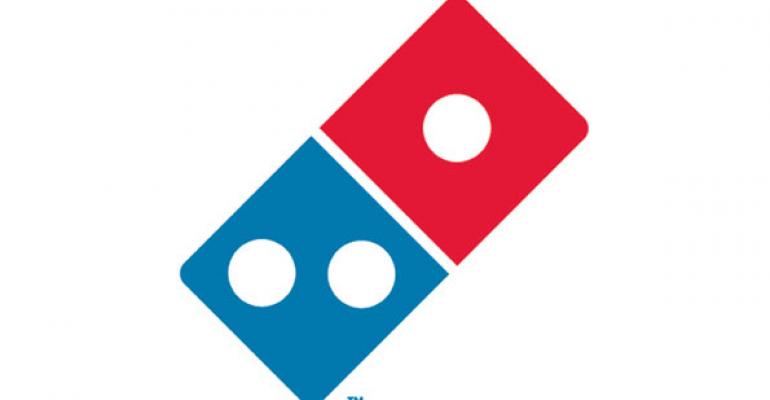Of the many positive results Domino’s Pizza Inc. reported for its Dec. 29-ended fourth quarter and fiscal year 2013, the unit count growth at home and abroad signified the Ann Arbor, Mich.-based company’s best performance in years.
Domino’s opened a record 573 new restaurants in its international division, which also recorded its 20th consecutive year of positive same-store sales in 2013. In the United States, Domino’s opened 58 net new locations, its first year of major net unit expansion since 1997, which executives hope would lay the groundwork for a major systemwide reimaging to be completed over the next four years.
“My headline take on our full year was that we again drove great results, and we’re very happy with the progress made in 2013,” chief executive Patrick Doyle said during the company’s earnings call. “We have strong global momentum in sales, store growth and innovation, which culminated in a terrific year overall.”
RELATED
• Domino’s Pizza same-store sales fuel growth in 2013
• Domino’s Pizza to offer hands-free ordering from car
• More Domino's news
Domino’s net income for the year rose 27.2 percent, to $143 million, or $2.45 per share, on a 7.4-percent increase in revenue, to $1.8 billion, reflecting same-store sales gains of 5.4 percent in the United States and 6.2 percent internationally.
The brand’s improvement in unit-level profit has fueled unit growth, Doyle said. Franchisee profitability has grown every year since the metric reached a low point in 2008.
“We want to build on the momentum that we’ve started to show,” Doyle said. “The cash flow of the stores is better, which makes it a better product for our franchisees to buy and to build. So their return gets better, and it’s generating more interest, and that’s what has generated the store growth.”
The requirement that all Domino’s franchisees around the world remodel their restaurants to the Pizza Theater prototype likely would slow down the pace of domestic unit growth only modestly, Doyle surmised, because “you’re looking at a relatively small group of well-financed franchisees” that have been opening new units.
“The reality of it is we have almost 1,000 franchisees in the U.S., and the ability to access capital is quite good right now, particularly for the largest franchisees,” he said. “With 58 stores being built last year out of 1,000 franchisees, you’re looking at a small minority of our franchisees building stores.”
The franchisees have known for at least a year, as Pizza Theater was being tested in Domino’s company-owned locations, that the remodels would be mandated, Doyle added. So far, the brand’s operator community is enthusiastic about Domino’s first systemwide remodel in more than a decade.
“The overall take from the system was really very positive,” Doyle said. “I’d even go so far as to say even more positive than what you would expect when you ask people to make a substantial reinvestment into their system. They get it, they understand it, and our franchise system is as engaged and positive about where we are as a brand as I’ve seen in 17 years at Domino’s.”
New restaurants and remodeled units carrying the Pizza Theater design — which has a more open kitchen with more sight lines to the ovens and make line — are meant to drive more delivery sales, as well as carryout sales, Doyle said.
“Even delivery customers want to know where their food is coming from,” he said, “and if they’re driving by the store, they want to see that it’s a good place. I think it helps both [delivery and carryout] and the brand overall.”
About 10 percent of Domino’s sales come from walk-in customers placing carryout orders, he added.
Domino’s operates 390 company-owned units and franchises another 4,596 locations in the United States. It franchises another 4,986 restaurants in 70 international markets.
Contact Mark Brandau at [email protected].
Follow him on Twitter: @Mark_from_NRN





